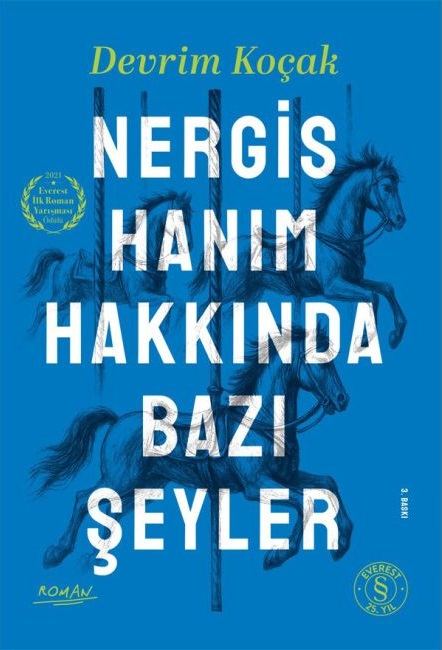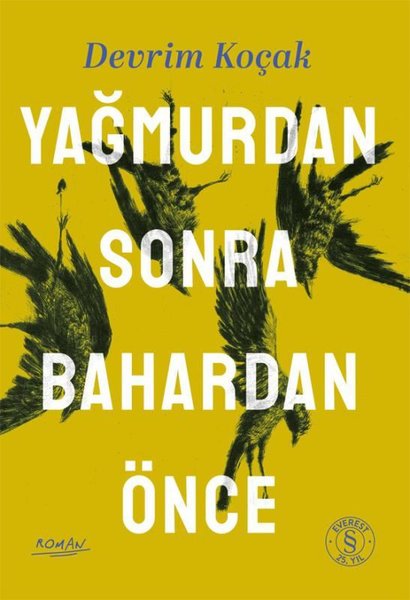In which novels can we see traces of Gogol’s story The Overcoat?
Nikolay Gogol’s story The Overcoat (1842) is considered one of the turning points of modern literature and has left its mark on many novels with its existential, social and philosophical depth. The story deals with the crushing effect of the bureaucratic system on the individual, the devastation of material deprivation on the human soul and the tragic loneliness of the little man. Akaky Akakiyevich’s obsession with the overcoat points to a longing not just for an object but for identity, status and human dignity. These themes clearly show the influence of The Overcoat in 19th and 20th century literature, especially in works dealing with the individual’s conflict with society and absurd existential situations.
- Fyodor Dostoyevsky – Notes from the Underground (1864)
The Overcoat’s theme of the individual being crushed by the social structure and searching for his own existential meaning finds a deep echo in Dostoyevsky’s Notes from the Underground. Akaky’s dim presence in the bureaucracy parallels the Underground Man’s own conscious loneliness and incompatibility with society. Philosophically, both works question the Hegelian subject-object dialectic: Akaky identifies with the coat, while the Underground Man experiences his own consciousness as a prison. Dostoyevsky takes The Overcoat’s absurd tragedy to a more existential level, transforming it into a conflict between the individual’s free will and social determinism.
- Franz Kafka – The Metamorphosis (1915)
Kafka’s The Metamorphosis addresses the Overcoat’s meaninglessness and alienation of the individual in the social machine in a more grotesque way. While Akaky’s relationship with the coat is his attempt to hold on to his human dignity, Gregor Samsa’s transformation into an insect reveals that he is already an “object” in the bureaucratic and familial system. Both works approach Heidegger’s concept of Dasein from an opposite perspective: Instead of an authentic existence, man is condemned to a “fallen” (Geworfenheit) existence with the roles imposed on him by society. Kafka transforms the bureaucratic absurdity of The Overcoat into a metaphysical nightmare for modern man.
- Albert Camus – The Stranger (1942)
Meursault’s indifference in Camus’ The Stranger bears a philosophical kinship with Akaky’s dim presence in The Overcoat. Akaky’s attachment to the overcoat is a symbol of the search for meaning in a meaningless world; Meursault, on the other hand, has completely given up on this search. Camus’ absurd philosophy takes the tragic absurdity presented in The Overcoat to a more nihilistic dimension. Akakiy’s struggle for the coat can be read as a precursor to Camus’ Sisyphus-like search for meaning: both characters attempt to create their own “coat” in a meaningless universe, but this effort is ultimately futile.
- Herman Melville – Bartleby, Clerk of the Scribes (1853)
Melville’s Bartleby takes the helplessness and passive resistance of the individual in the bureaucratic system to a more radical form. While Akakiy’s attachment to the coat is an attempt to fill his existential void within the system, Bartleby’s sentence, “I prefer not to,” is a nihilistic rejection of this system. Philosophically, both works point to Kierkegaard’s concept of “anxiety of the individual”: Akakiy is lost within the system, while Bartleby steps outside it and falls into an existential void with this choice. The tragic tone of The Overcoat evolves into a colder and more distant absurdity in Bartleby.
- George Orwell – 1984 (1949)
The totalitarian regime in Orwell’s 1984 is a more dystopian reflection of The Overcoat’s bureaucratic system. While Akaky’s dependence on the overcoat is an attempt to preserve his individual identity, Winston Smith’s resistance to the Party reflects the individual’s fear of losing his identity in a totalitarian system. Foucault’s concept of biopolitical power can be seen in both works: Akaky’s body and soul are under the control of the bureaucracy, while Winston’s mind is under the panoptic surveillance of the Party. The tragedy of the little man in The Overcoat turns into the tragedy of all humanity in 1984.
- Joseph Conrad – Heart of Darkness (1899)
Conrad’s Heart of Darkness brings the theme of the Overcoat, the individual’s confrontation with his own meaninglessness, to the context of colonialism. While Akakiy’s relationship with the overcoat is his attempt to give meaning to an empty existence, Kurtz’s “success” in Africa is the western man’s attempt to cover up his own moral and existential emptiness. Both works reflect Nietzsche’s desperation in man’s search for meaning after the “death of God.” The bureaucratic world of the Overcoat is replaced by the brutal world of imperialism in Heart of Darkness, but in both cases the individual confronts his own existential limits.
- Samuel Beckett – Molloy (1951)
Beckett’s Molloy transforms the absurd and tragic tone of The Overcoat into a modernist existential crisis. Akakiy’s obsession with the overcoat is a symbol of his search for identity; Molloy’s relationship with his own body and belongings is a reflection of a consciousness surrendered to the meaninglessness of existence. Beckett’s absurd theater and novel expand the tragedy of the little man in The Overcoat to a universal void that can be associated with Sartre’s concept of “nausea.” Both works emphasize the futility of man’s efforts to create meaning in a world where he questions his own existence.
- Vladimir Nabokov – Pale Fire (1962)
Nabokov’s Pale Fire deals with the Overcoat’s loss of the individual in a world of meaning he creates in a more playful and metaphysical way. Akakiy’s attachment to the coat symbolizes his detachment from the real world, while Kinbote in Pale Fire makes a similar detachment by creating his own imaginary kingdom of Zembla. Philosophically, both works point to Schopenhauer’s idea that “the world is my design”: Akakiy and Kinbote attempt to construct their own realities, but their efforts end in tragic or absurd failure.
- Thomas Mann – Death in Venice (1912)
Mann’s Death in Venice examines the destruction of the coat by the individual’s own desires in a more aesthetic and psychological context. Akakiy’s obsession with the coat is an attempt to compensate for his material and spiritual deprivation, while Gustav von Aschenbach’s obsession with Tadzio accelerates his aesthetic and moral decline. Both works reflect Freud’s conflict between the “id” and the “superego”: Akakiy’s desire for the coat is an expression of a repressed longing, while Aschenbach’s desire leads to the collapse of his rational self.
- J.M. Coetzee – Shame (1999)
Coetzee’s Shame reinterprets the individual’s fragility and search for honor within the social system in a postcolonial context. Akakiy’s relationship with the coat reflects his desire for social status, while David Lurie’s search for shame and redemption addresses the moral and existential crisis of the modern individual. Within the framework of Levinas’ “ethics of the other,” both works question the individual’s failures in their relationship with the other: Akakiy is ostracized by society, while Lurie confronts his own moral limitations.


